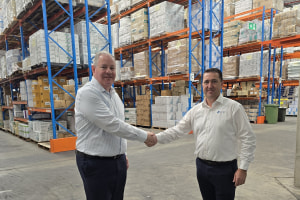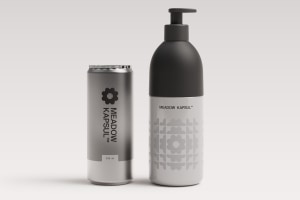Inbound performance is the main challenge that Woolworths has faced with its first fully automated distribution centre (DC), with the company sharing its learnings at APPEX, as it prepares to open two more automated warehouses.
Speaking on the Matthews stand on its Retailer Engagement Hub, Sean Leicester, head of Supplier Solutions at Woolworths Group, said while software, infrastructure and machine compatibility were initially thought to be the areas that would be the most challenging, it was in fact the pallets, wrapping, cartons and glue of the inbound stock that gave the automated DC its biggest challenges.
Leicester said, “The biggest challenge we found in the automated DC has been pallet overhang, or contouring, representing more than half of all issues we have had. The overhang can be just the shrink wrap, or the cartons themselves."
Leicester said Woolworths was working hard with its supplies to address the issue.
The state of pallets themselves was the second biggest issue the Woolies' automated DC has had to deal with, with around one in 20 currently rejected, which Leicester is aiming to reduce to one in 100. He said, “With an automated DC a stoppage for a bad pallet can take days to recover from.”
Labelling and barcodes were initially the worst issue, representing 80 per cent of problems when the DC in Dandenong first opened in 2019, however that figure has come right down in the five years since.
Carton sealing, or flawed carton sealing, is an ongoing issue for the DC. Leicester said when a flap pops open it stops the whole process, and while in a manual DC the worker would simply lift the carton away, that doesn’t happen in the automated facility. He said four hours a week of downtime at the Dandenong DC is due to poor carton sealing. On the other hand, excess use of sealant can cause cartons to stick together.
Shelf-ready packaging also causes issues in the automated DC. If the material used is not strong, the lower packaging can be crushed, causing it to bow out, which again stops the line when it gets into the automated system. Leicester said they were working with suppliers and transport companies to address the issue.
He said carton crushing also occurs when the shrink wrap is applied too tightly, and that again causes issues when the cartons are in the automated system.
Leicester ended his presentation by returning to labelling and barcodes, saying that pallet labels had a 30 per cent error rate when the DC was first operational, but by working with its suppliers, Woolies has reduced that to 2.44 per cent, and he said those were mainly the result of print quality issues.
He cited the partnership between Woolies, GS1 and Matthews as the reason that Woolies has seen the challenges of inbound performance in labels improve dramatically over the past five years, and said that while the two new fully automated DCs scheduled to open in Moorebank would be as well equipped as possible to deal with inbound performance issues, ultimately it would be a partnership between suppliers, materials suppliers, transport and Woolies that would drive down the errors and eliminate the DC stoppages, which he said did ultimately impact its stores.






